The Apple iPad Pro Review
by Ryan Smith, Joshua Ho & Brandon Chester on January 22, 2016 8:10 AM ESTSmart Keyboard
The other half of what makes the iPad Pro worth talking about is the Smart Keyboard. For those that are unfamiliar with how this keyboard works, in essence it’s really a flip cover that happens to hide a keyboard inside of it. This is yet another thing I mentioned that the iPad really needed to improve its potential as a productivity tool.
I’m going to go ahead and spoil this section by saying that while the Smart Keyboard is worthwhile if you’re typing out more than a paragraph, this feels like one of the clunkier aspects of the iPad Pro.
However, the important question is how I got to that conclusion. Going over the user experience of the keyboard is a pretty simple matter. Attaching the cover to the tablet works the same way it always does, which is accomplished by placing the edge of the cover onto the edge of the tablet which also contains the Smart Connector. There are some strong magnets that help with alignment here, and provide the positive pressure needed to ensure that the data and power pins of the Smart Connector are firmly connected to the keyboard.
Once the cover is connected, setting up the keyboard is done by folding it out and doing some origami until the tablet is docked into the right place on the keyboard, which has a noticeable notch to it. Aligning this despite the strong magnets does take some work, as it seems that unless the cover is setup correctly the keyboard isn’t enabled at all.
If you’re trying for precision, I would say that there’s roughly a 4-5 second time delay from the moment that you decide that you need to use the keyboard to actually using it. In addition to this time delay, the keyboard is rather precarious and is basically only stable when you’re using it on a table. While gravity can keep the whole setup somewhat stable on your lap when the display is leaning backwards, if the display starts leaning forwards there’s really nothing stopping it from collapsing and detaching from the cover, as while the magnets are strong enough to hold the tablet in a static state, they aren’t strong enough to hold the tablet if there’s the additional force of decelerating the tablet as it falls. As a result, the angles that the keyboard and tablet can hold relative to each other is fixed.
To be fair, once the keyboard is set up and it’s in a stable position, typing on the tablet is a great experience. The Surface Pro 3 was decent in my experience, but the touchpad with its lack of strong palm rejection made for some frustrating experiences. In this respect, the iPad Pro does a lot better, to the extent that I didn’t have any trouble doing things like typing up long forum posts or various sections of this review. Key travel is short, but there’s good haptic feedback and the layout of the keyboard doesn’t have any strange issues that seem to happen so often to so many tablet keyboards. Something like the Pixel C just doesn’t even compare here, especially because due to the use of Bluetooth it’s absolutely useless in an apartment or any remotely dense environment where the 2.4 GHz spectrum is crowded to the point that it approaches being unusable.
However, despite this significant setup time for the keyboard cover, pretty much the only value for the keyboard cover is text input. Due to the ergonomics of a near-vertical touch screen it’s really not something that can be used for extended periods of time as once you’re done with text input to comfortably use the touch screen you really need to break down the keyboard and revert it back to a simple tablet.
I’ve spent a lot of time thinking about the conundrum of the keyboard when it comes to these tablets, and honestly I don’t think anyone has figured out the right way of doing things yet. I think the Pixel C in form is a step in the right direction, but the execution is unfortunate to say the least. The iPad Pro touchscreen keyboard has the size to allow for touch typing, but the utter lack of position feedback makes it difficult to know where to keep your hands and because touching the display means inputting a character it’s necessary to awkwardly keep your hands right above the glass of the display. The heart of the issue here is that it’s necessary to have an input method where it’s easy to keep your fingers resting on the home row of the keyboard, with clear haptic feedback for input and some indication of where the keys are. It’s also necessary to make sure that this keyboard is easily accessible when it’s needed but quickly stowed away when it isn’t.
I can’t help but wonder whether the better solution here would be something like Lenovo’s Yoga Pro design, but with a different method of execution. Instead of making the two halves a single unit, the keyboard portion should be easily and quickly detached with the smart connector held within the hinge. Rather than a traditional laptop keyboard, something more like the current Smart Keyboard would make a lot of sense. However, I suspect that in doing this a traditional flip cover would no longer make sense as the keyboard would really become an integral part of the user experience once properly integrated. We can talk about how touch-only is a faster and more convenient experience, but this really only applies to navigation as while I can type at about 40 words per minute without issue on a phone or tablet trying to reach 100 words per minute is hard to say the least.
Overall, I should make it clear that the iPad Pro’s Smart Keyboard is not a bad keyboard by any means. When I’m able to just focus on typing, the user experience far exceeds pretty much anything else I’ve tried in the industry. The problem is that as the Smart Keyboard starts to approach the point where I can actually use it, I start to really notice all of the flaws that the implementation has. In this case, the two major issues that really need to be solved here are speed to deploy/stow and lap stability. While a lot has been made of the iPad Pro’s inability to have adjustable viewing angles realistically it only needs two viewing angles, similar to how the Smart Cover only has two viewing angles. If the Smart Keyboard can feel like it appears and disappears almost instantly and can be used without a table effectively, it would probably be the ideal solution to the keyboard problem that tablets face.


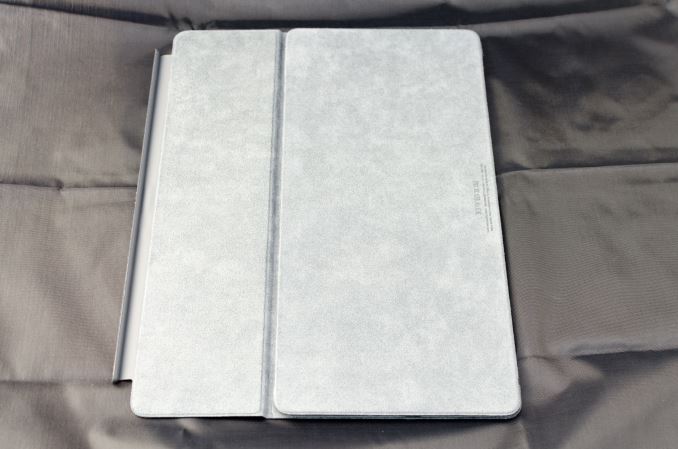
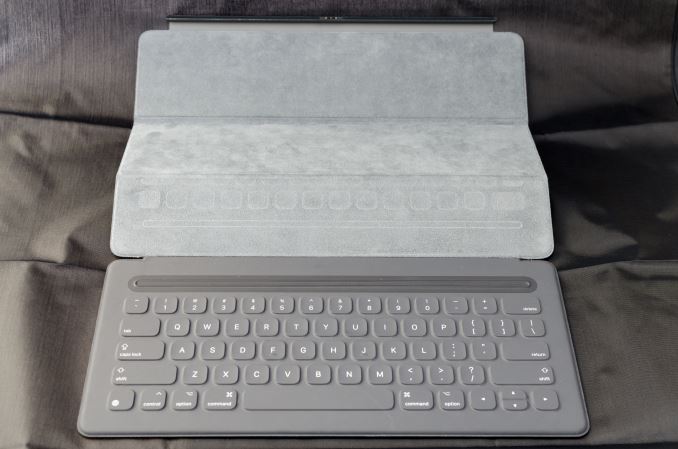
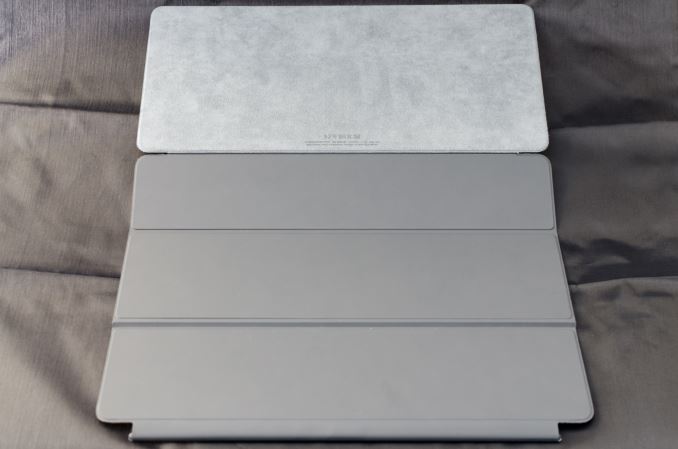
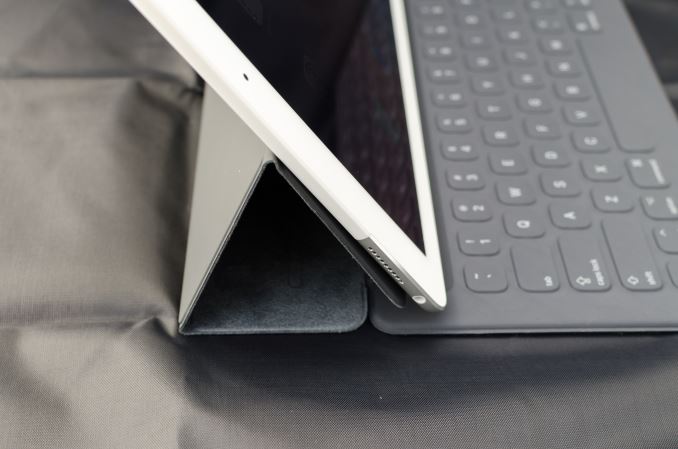
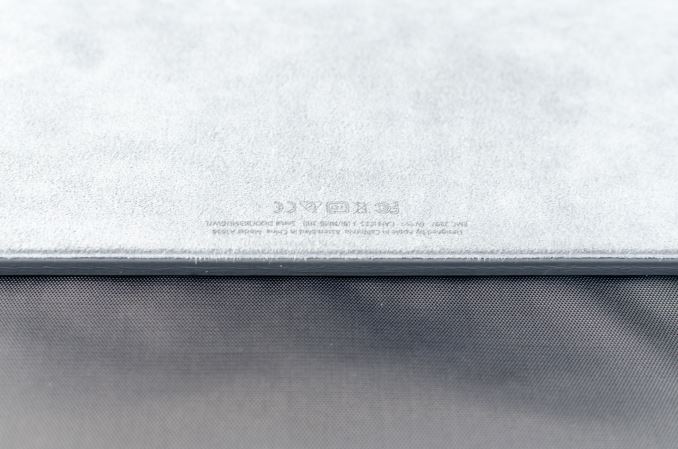








408 Comments
View All Comments
HammerStrike - Friday, January 22, 2016 - link
"I beg your pardon, Miss Taggart," he had said, offended. "I don't know what you mean when you say that I haven't made use of the metal. This design is an adaptation of the best bridges on record.What else did you expect?”
"A new method of construction."
"What do you mean, a new method?"
"I mean that when men got structural steel, they did not use it to build steel copies of wooden bridges."
Ann Rand, "Atlas Shrugged"
The question around the iPad Pro is not is it a close enough copy of a workstation to do workstation work, but does it enable new work streams that were previously unexplored. As has been previously noted, the Surface Pro 4 is an extremely capable piece of hardware that checks all the same boxes as the iPad Pro, but no software had been designed to take advantage of it's unique form factor - it's still using a wooden design on a steel bridge.
The real differentiation for the iPad Pro is iOS, and the touch first / mobility first design mentality it brings to the table - software has to be written specifically for that environment and usage case. There are some notable hardware and input difference between the iPad Pro and previous iOS devices - time will tell if they can be combined to provide real productivity improvements vs previous designs or if they are merely novelties that will be quickly forgotten. Jury is still out on that, but if anyone can build the "critical mass" to jump start that exploration it's Apple. Hopefully some apps come out and wow us - to channel Asimov, there is a single light usage case advancement, and to progress it anywhere is to progress it everywhere.
name99 - Friday, January 22, 2016 - link
I simply cannot figure your complaint: "It is a computer, REDUCED to an accessory, which COULD be THAT MUCH MORE USEFUL."So what do you want? You want the iPad Pro form factor running OSX? You want the ability to plug in a second screen? You want to be able to install Windows?
Your complaint seems to be "this is not a Surface Pro 4". It isn't MEANT to be.
It's meant to be a larger screen version of an iPad, for those for whom an iPad is an appropriate device. If you're not one of those people, WTF does it matter to you? Do you hang around bicycle tracks telling everyone there they should be using a motorbike or a car or a truck because those are more powerful?
You are stuck in a certain vision of what a computer is "supposed" to be, every bit as much as IBM confronted by DEC couldn't imagine a computer that wasn't a mainframe, then DEC confronted by Apple, Atari, etc couldn't imagine a computer that wasn't a mini, then in 2007 people couldn't imagine a pocket computer.
If you want to think of this as an "accessory" to a Mac, go ahead. I don't see what the value of that analogy, or why it's supposed to be an insult (Apple grew to the company it is today on the back of that accessory, the iPod...). People loved their iPods, they love their iPhones (especially the way they work together seamlessly with their Macs), and I expect they will love their iPad Pros.
Jumangi - Saturday, January 23, 2016 - link
Actually it is being touted as surface competition. Apple PR pushes this as a laptop replacement and its pricing is right with the Surface. Totally valid to compare the two.Constructor - Saturday, January 23, 2016 - link
You can do that. And Apple does indeed propose it as such – among very many other things, quite a few of which are actually better served by an iPad than by a conventional notebook.Just one example among many: The ability to simply use it in portrait mode already makes a huge difference for anything document-related, for which the narrow widescreens on computers are woefully inadequate.
MaxIT - Saturday, February 13, 2016 - link
Indeed it is. And it's way better than a Surface Pro, because it runs an OS that is actually designed to be used with a touch interface, while the Surface doesn't....Relic74 - Saturday, February 27, 2016 - link
Windows 10 was designed to be used with touch as well, it's silly to even think otherwise. People who such things have never used one before, simple as that.The Hardcard - Friday, January 22, 2016 - link
It's not about now. Yes now I have a laptop for things my device can't do, and a desktop for things my laptop can't do timely.But I am excited that soon devices that can be carried and pocketed will soon be powerful enough and have the software to do every thing I want to do in a timely fashion.
The iPad Pro marks the beginning of the final stage of the mobile transition, being THE computer for all mainstream activities.
There will still be larger form factors, just as there will still be mainframes. But most homes and many business won't have them.
In fact, that is what IBMs new angle is. The occasional or particular high-power computation you need done elsewhere, results served to your device. Most people won't even need that
RafaelHerschel - Saturday, January 23, 2016 - link
Conditioning I guess. Some people can't imagine that using the right tool for the job is more important than using a form factor that was originally designed for media consumption.Ananke - Friday, January 22, 2016 - link
Pros use Oracle, SAP, Cytrix for 98% of hardware, and some other exotic stuff amounts for the 2% left...Hence, nobody will approve capital expense of $1000+ on software unsupported device, when a $329 workstation can just do it. Software companies don't bother to bring the huge databases to exotic silicon either, when there are already CHEAPER well developed alternatives.Tablets are great for POS terminals, some apps that require mobile high quality visual content, and that's it pretty much. There is just no functionality need for something else, especially an expensive one.
mrcaffeinex - Friday, January 22, 2016 - link
In the office where I work, the iPad Pro may be the device people have been looking for. All of our remote application access goes through Citrix, with the most-used applications being Outlook for e-mail, Word for document review/minor editing, and Adobe Reader for PDF viewing. The experience on the iPad currently is not great, because the desktop versions of these applications do not translate well to the touch-first environment. The stylus and keyboard cover, coupled with the enhanced resolution, could make a difference.It is not a solution for everyone, but I have been fielding calls from our users already about wanting these, so there is potentially some kind of market to cater to here. I realize that from a technology standpoint there are more powerful alternatives and that there are other ways to approach the software situation, but at the end of the day, this is the kind of device that our users want: an iPad with a slightly bigger screen, responsive stylus input, and a keyboard cover in a convenient package, not to mention the implied prestige of Apple product ownership (in some circles the image is considered very important).
Time will tell if this is a fad or a long-term product line strategy. If Apple can turn a profit with these (and they do have a history of turning a profit on their devices), even in spite of a limited market appeal, they will probably keep marketing them.